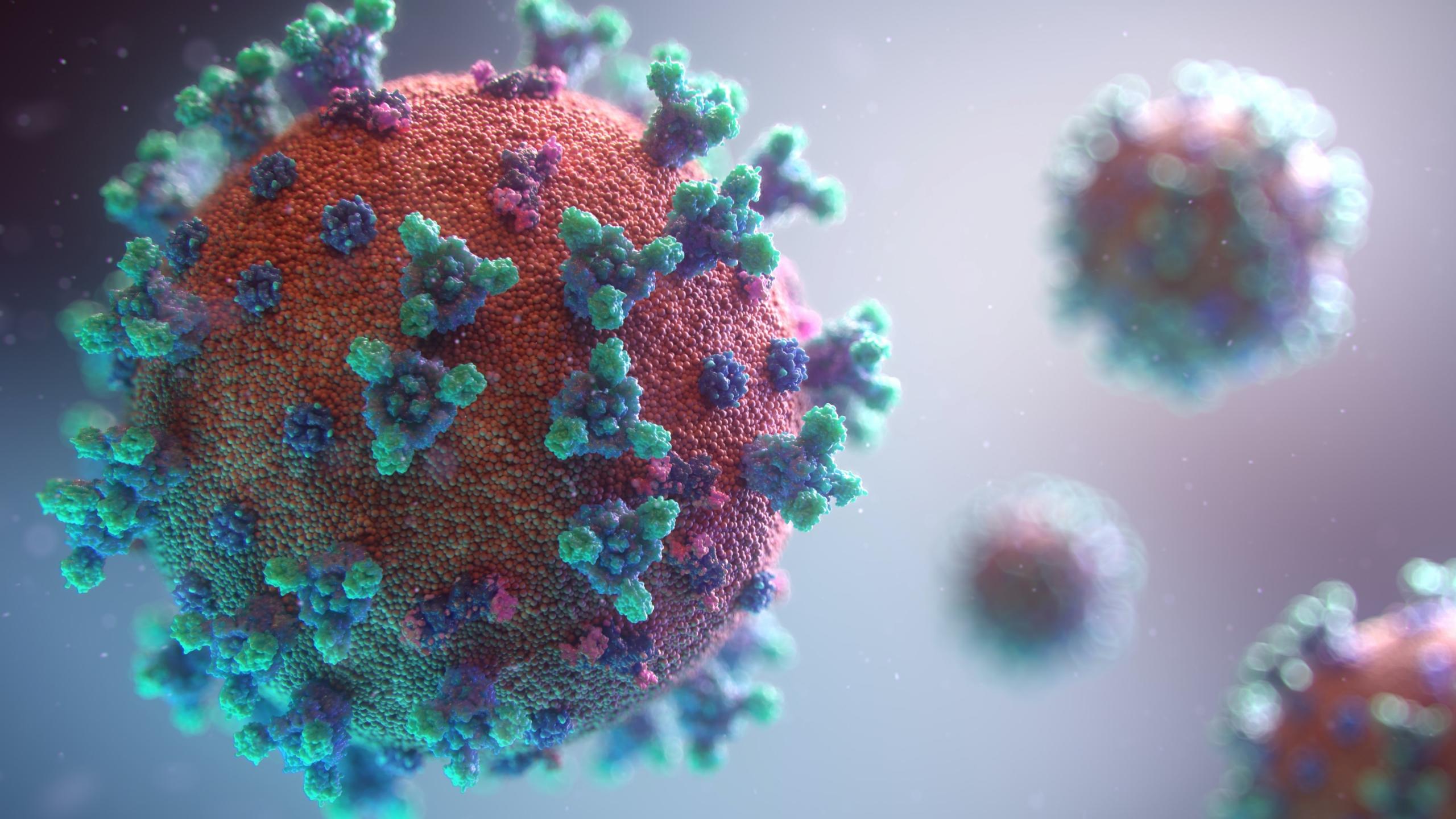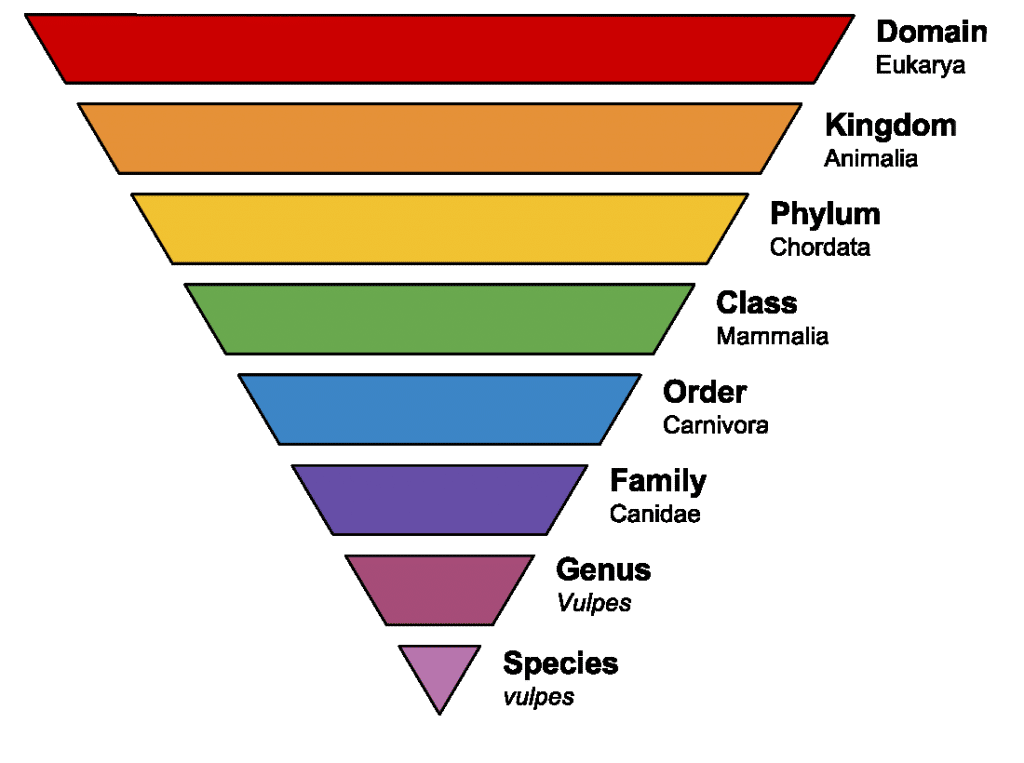Biodiversity is the variety of living organisms that interact with one another. The living organisms include microorganisms, animals and plants. These organisms are categorised and named using the taxonomy.

What is taxonomy?
One of the topics that you will learn in Biology form 5 is taxonomy. Taxonomy is the field in bio-life that involves the classification, identification and naming of organisms in an organised manner.
With taxonomy, we can manage information and data that have been collected using a systematic and methodical approach to get across the scientific community.
Why is it important to classify and name the organisms?
The reason to classify and name the organisms is to facilitate studies and discussion with biology background among scientists at an international level. The classification and naming of the bio-life must be done in systematic manners using this taxonomic classification system:
Classification
- Organisms are categorised based on the physical features in a taxonomic hierarchy system.
Identification
- Organisms are identified using dichotomous keys.
Naming
- Organisms are named by a system called binomial nomenclature system.

What are the bases for organisms' classification?
All organisms in the world can be classify into six kingdoms. These organisms are classified based on the types of cells, the number of cells and types of nutrients.
Archaebacteria
- Prokaryote organisms.
- Unicellular organisms.
- Are a primitive bacteria.
- Have cell walls with no peptidoglycan.
- Live in a very hot, acidic, salty or anaerobic environment.
- Divided into 3 groups based on their habitats which are:
- Methanogen - Obligate anaerobic bacteria are found in swamps and in the digestive tract of humans and ruminants.
- Halophile - found in places with extremely high salt concentration.
- Thermophile - able to withstand high temperatures and flourish at an optimum temperature of 60C to 80C.
Eubacteria
- Prokaryote organisms.
- Unicellular organisms, which usually form colonies.
- Known as ‘true’ bacteria.
- Have cell walls with peptidoglycan.
- The cytoplasm contains ribosomes and plasmids, but has none of the membrane-closed organelles.
- Bacteria are classified according to their shape.
Protista
- Eukaryote organisms.
- Can be either unicellular or multicellular organisms.
- Can be heterotrophs, autotroph or both.
- Have a simple cell organisation without specialised tissues.
- The cell contains a nucleus that is bound by a nuclear membrane, as well as other membrane-bound organelles.
- Divided into 3 groups which are protozoa, algae and mould.
Fungi
- Eukaryote organisms.
- Can be either unicellular or multicellular organisms.
- Heterotrophs (Saprophytes or parasites).
- Their wall is made up of chitin.
- The body is created of a thread-like network of hyphae called mycelium.
Plantae
- Eukaryote organisms.
- Involve all multicellular plants.
- Can synthesise their own food via photosynthesis because they have chlorophyll.
- Can undergo sexual or asexual reproduction.
Animalia
- Eukaryote organisms.
- Involve all multicellular animals.
- Heterotrophs.
- Most animals can move.
- Most animals reproduce sexually.
Terms explained:
Prokaryote
- A prokaryote is a type of cell that lacks a membrane-bound nucleus and membrane-enclosed organelles.
Eukaryote
- Eukaryote means that the cell has a nucleus and membrane-enclosed organelles.
Unicellular
- Unicellular is a single-celled.
Multicellular
- Multicellular has more than one cell.
Heterotroph
- A heterotroph is an organism that cannot synthesise its own food, but obtains food molecules by eating other organisms.
Autotroph
- Autotroph is an organism that can synthesise its own food from organic materials by using light energy or chemical energy.
You can also look into the form 2 Science textbook for extra reference.

What is taxonomy hierarchy?
Taxonomy hierarchy is the process of arranging various organisms into successive levels of biological classification. The system used in taxonomy is the Linnaeus hierarchy system.
The order of the hierarchy is:
- Domain
- Kingdom
- Phylum
- Class
- Order
- Family
- Genus
- Species
Linnaeus Binomial Nomenclature System
The formal system of naming organisms is called Linnaeus binomial system. Each scientific name consists of two words. The structure used is - first name is the genus and the second name is the species.
Dichotomous Key
A dichotomous key is a tool used to identify organisms based on their similarities and differences of characteristics. One of the ways to build a dichotomous key is by using a series of couplets. Each couplet is made up of two statements about the organism’s traits or its grouping.

What is the concept of biodiversity?
Biodiversity can be categorized into three types:
1. Genetics Diversity
- The genes variation of an individual within a population and the gene variation between different populations of the same species.
- There are no two identical individuals of the same species.
2. Species Diversity
- The variation and variability of organisms.
- Includes the total number of species in a community and the species distribution in a community.
3. Ecosystem Diversity
- The biotic community and ecological process in ecosystems.
Did you know that form 3 English textbook also mentions the variety of life under the sea? Biodiversity is indeed a fascinating subject to talk about!
What are the differences between microorganisms and viruses?
Microorganisms are microscopic organisms that can only be seen under the microscope. They cannot be seen by the naked eye. Most of them are unicellular, which means they are made up of only one cell that carries out all the necessary functions of the organism.
Types of microorganisms
Microorganisms can be categorized into a number of different types which are bacteria, protozoa, algae, fungi and viruses. Here are the main characteristics of each of these microorganisms.
Bacteria
- Do not have a nucleus because of the lack of nuclear membranes.
- Their size range from 1 to 10 μm.
- Can exist as:
- A single cell
- A diploid (a pair)
- In filaments
- In chains
- In cluster
- Can exist in a few basic shapes like:
- Coccus (sphere)
- Vibro (comma)
- Bacillus (rod/cylinder)
- Spirillum (spiral)
- Examples of bacteria:
- Lactobacillus sp
- Streptococcus sp
- Staphylococcus aureus
Protozoa
- Animal-like unicellular microorganisms.
- Move around using:
- Pseudoposia (false feet)
- Cilia
- Flagellum
- Usually found in aquatic habitats.
- Can be heterotrophs or autotrophs.
- Can be:
- Free-living
- Parasite
Algae
- Consist of unicellular microorganisms and multicellular ones.
- Some have flagellum to move in the water.
- Are autotrophs and have chloroplast, but do not have leaves, stems or roots like plants do.
- Live in ponds, lakes and oceans.
Fungi
- Are unicellular microorganisms.
- Do not contain chlorophyll.
- Are heterotrophs, either parasite or saprophytes.
- Do not have roots, stems or leaves.
- Have cell walls created by chitin.
- Exist in the form of mycelium that is made up of a network of threads called hyphae.
- Usually found in dark or moist places and on decomposing or dead organisms.
Viruses
- Not included in any of the kingdoms.
- Do not carry out any life process outside of a cell.
- Reproduce using living cells by injecting their genetic materials into host cells.
- Made up of nucleic acid (DNA or RNA) and capsids made from protein.
- Their size ranges from 20nm to 400nm and can only be seen using an electron microscope.
- Examples of viruses:
- Human Immunodeficiency Virus (HIV)
- T4 bacteriophage
What is the function of microorganisms?
Each microorganism plays an important role in the world.
Microorganisms in Nitrogen Cycle
There are a number of microorganisms involved in the nitrogen cycle. They are responsible for Nitrogen fixation, nitrification, denitrification and ammonification.
Microorganisms As Producers
Microorganisms that are usually found floating on the surface of the oceans, ponds or lakes are important to the aquatic ecosystems. They make their own food and are always at the start of the food chain.
Microorganisms As Decomposers
The microorganisms can decompose organic materials from dead organisms. They break down complex organic materials into simple compounds and provide nutrients back to the soil.
Microorganisms As Parasites
Organisms that live on or in host organisms are called parasites. They usually get food or another benefit from the host while the host may get harmed or killed.
Microorganisms As Symbionts
A symbiont is an organism that has a close relationship with another organism (host). There are two types of symbiont:
1. Ectosymbiont
- Lives outside of the host cells.
2. Endosymbiont
- Lives inside the host cells.
What is the relationship between pathogens and vectors?
Pathogen
The pathogen is an organism that causes infectious diseases. It can be viruses, bacteria, protozoa, or fungi. The diseases caused by a pathogen occur when organisms enter the body, divide and multiply, which cause damage to the cell inside the body.
Human immunity system can be affected by pathogens in many ways. Some pathogens can cause cell damage and interrupt cell functions, others release toxins that can destroy metabolic activities in the body and lead to paralysis.
Vectors
Vectors are organisms that transmit pathogens and cause certain diseases. Some of the examples of vectors are flies, mosquitoes and cockroaches.
- Flies spread the Vibrio cholera bacteria.
- The mosquito spreads the dengue virus.
- Cockroaches spread salmonella typhi bacteria.
You can also refer to the form 2 Science textbook to revise the pathogen and vector sub-topic. Just be sure to keep your Science form 2 all chapters' notes for reference.
There are also other topics in Biology form 4 and form 5 that you already learned in Science form 3 and Science form 2. Some of the topics are also taught briefly in the form 4 Science textbook, but it is in the Biology subject that you will learn all about them in detail.

Biodiversity is one of the most interesting topics in the SPM Biology syllabus. It is easy to score if this topic comes in your SPM examination. However, if you struggle to understand this topic, Superprof can lend you a big help.
Superprof is one of the best online tutoring websites that offers thousands of home tutor online available at your service. You can look for ‘tuition near me’ or opt for online tuition Malaysia.
With the advancement of technology these days, you can opt for online tutoring sessions. You can use any online communication tools like Zoom, Skype, Google Meet, and so much more to connect to your tutors.
All you need is a stable internet connection, a decent laptop or desktop, reliable headphones and speaker and determination. Are you ready to learn?















